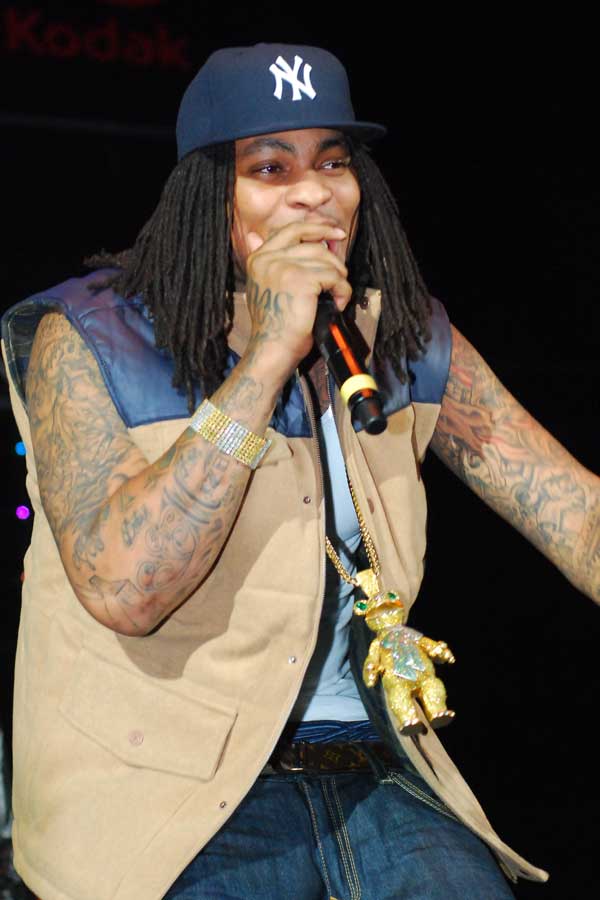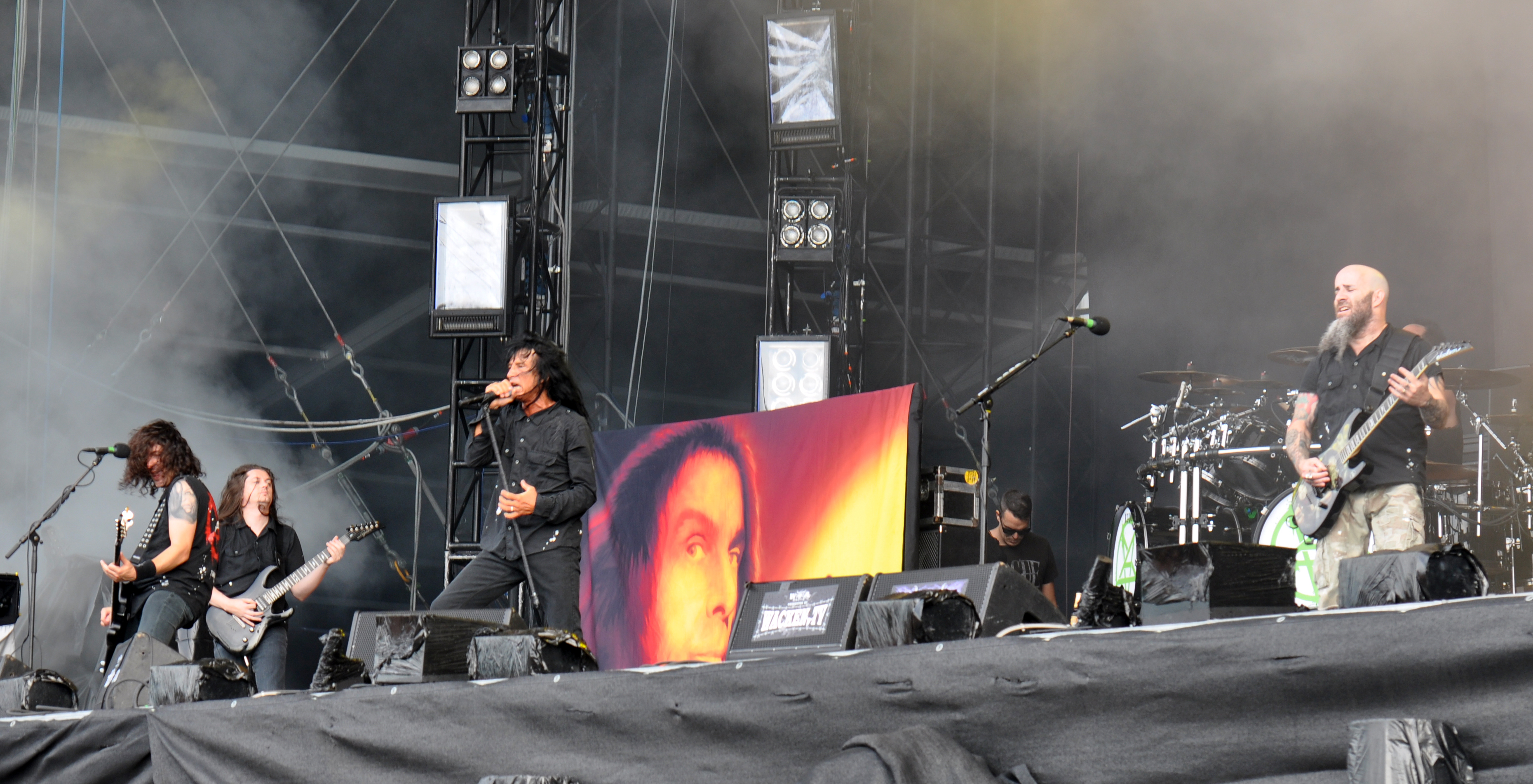|
Trap Rap
Trap is a subgenre of hip hop music that originated in the Southern United States during the 1990s. The genre gets its name from the Atlanta slang word "trap", a house used exclusively to sell drugs. Trap music uses synthesized drums and is characterized by complex hi-hat patterns, tuned kick drums with a long decay (originally from the Roland TR-808 drum machine), and lyrical content that often focuses on drug use and urban violence. It utilizes very few instruments and focuses almost exclusively on snare drums and double- or triple-timed hi-hats. Pioneers of the genre include producers Kurtis Mantronik, Mannie Fresh, Shawty Redd, Fatboi, Zaytoven, DJ Screw and Toomp, along with rappers Young Jeezy, Gucci Mane and T.I. (who coined the term with his 2003 album ''Trap Muzik''). The modern trap sound was popularized by producer Lex Luger, who produced the influential Waka Flocka Flame album ''Flockaveli'' in 2010, and cofounded the prolific hip-hop production team 808 Maf ... [...More Info...] [...Related Items...] OR: [Wikipedia] [Google] [Baidu] |
Southern Hip Hop
Southern hip hop, also known as Southern rap, South Coast hip hop, or dirty south, is a blanket term for a regional genre of American hip hop music that emerged in the Southern United States, especially in Atlanta, New Orleans, Houston, Memphis, and Miami—five cities which constitute the "Southern Network" in rap music. The music was a reaction to the 1980s flow of hip hop culture from New York City and the Los Angeles area and can be considered the third major American hip hop scene, alongside East Coast hip hop and West Coast hip hop. Many early Southern rap artists released their music independently or on mixtapes after encountering difficulty securing record-label contracts in the 1990s.allmusic/ref> By the early 2000s, many Southern artists had attained success, and as the decade went on, both mainstream and underground varieties of Southern hip hop became among the most popular and influential of the entire genre. History Throughout the 1980s and 1990s, the American ... [...More Info...] [...Related Items...] OR: [Wikipedia] [Google] [Baidu] |
Hyperpop
Hyperpop is a loosely-defined music movement and microgenre that predominantly originated in the United Kingdom during the early-to-mid 2010s. It is characterized by a maximalist or exaggerated take on popular music, and artists within the genre typically integrate pop and avant-garde sensibilities while drawing on themes commonly found in electronic, hip hop, and dance music. Deriving influence from a varied range of sources, some origins of the hyperpop scene are commonly traced to the output of English musician A. G. Cook's record label and collective PC Music and its associated artists such as Sophie and Charli XCX. Music associated with this scene received wider attention in August 2019 when Spotify used the term "hyperpop" as the name of a playlist featuring artists such as Cook and 100 Gecs. The genre spread within younger audiences through social media platforms, especially TikTok. The movement is often linked to LGBTQ+ online communities, and many key figures identify ... [...More Info...] [...Related Items...] OR: [Wikipedia] [Google] [Baidu] |
Slang
Slang is vocabulary (words, phrases, and linguistic usages) of an informal register, common in spoken conversation but avoided in formal writing. It also sometimes refers to the language generally exclusive to the members of particular in-groups in order to establish group identity, exclude outsiders, or both. The word itself came about in the 18th century and has been defined in multiple ways since its conception. Etymology of the word ''slang'' In its earliest attested use (1756), the word ''slang'' referred to the vocabulary of "low" or "disreputable" people. By the early nineteenth century, it was no longer exclusively associated with disreputable people, but continued to be applied to usages below the level of standard educated speech. In Scots dialect it meant "talk, chat, gossip", as used by Aberdeen poet William Scott in 1832: "The slang gaed on aboot their war'ly care." In northern English dialect it meant "impertinence, abusive language". The origin of the word is ... [...More Info...] [...Related Items...] OR: [Wikipedia] [Google] [Baidu] |
Southern United States
The Southern United States (sometimes Dixie, also referred to as the Southern States, the American South, the Southland, or simply the South) is a geographic and cultural region of the United States of America. It is between the Atlantic Ocean and the Western United States, with the Midwestern and Northeastern United States to its north and the Gulf of Mexico and Mexico to its south. Historically, the South was defined as all states south of the 18th century Mason–Dixon line, the Ohio River, and 36°30′ parallel.The South . ''Britannica.com''. Retrieved June 5, 2021. Within the South are different subregions, such as the |
Rap Metal
Rap metal is a subgenre of rap rock and alternative metal music which combines hip hop with heavy metal. It usually consists of heavy metal guitar riffs, funk metal elements, rapped vocals and sometimes turntables. History Origins and early development (1980s–early 1990s) Rap metal originated from rap rock, a genre fusing vocal and instrumental elements of hip hop with rock. The genre's roots are based both in hip hop acts who sampled heavy metal music, such as Beastie Boys, MC Strecker Cypress Hill, Esham and Run-DMC, and rock bands who fused heavy metal and hip hop influences, such as 24-7 Spyz and Faith No More. Scott Ian of Anthrax (who helped pioneer the genre) believes Rage Against the Machine invented the genre. However, Urban Dance Squad (formed in 1986), fused rap and metal before Rage Against the Machine; nonetheless, Rage Against the Machine is considered to have refined the sound, giving rap rock an edginess and grit that would define the genre for years t ... [...More Info...] [...Related Items...] OR: [Wikipedia] [Google] [Baidu] |
EDM Trap (music)
EDM trap is a fusion genre of hip hop, rave music and EDM, that originated in the early 2010s on peaking popularity of big room house and trap music genres. It blends elements of trap, which is an offshoot of Southern hip hop, with elements of electronic dance music like build-ups, drops, and breakdowns. A variety of artists spurred trap's move into pop and EDM. History In 2012, a style of electronic dance music (EDM) incorporated elements of trap music, creating "dirty, aggressive beats nddark melodies." Electronic music producers, such as TNGHT, Baauer, RL Grime and Flosstradamus expanded the popularity, and brought wider attention to the derivative forms of trap. This genre saw the use of techno, dub, and electro sounds combined with the Roland TR-808 drum samples and vocal samples typical of trap. In the later half of 2012, these various offshoots of trap became increasingly popular and made a noticeable impact on the American electronic dance music scene. The music w ... [...More Info...] [...Related Items...] OR: [Wikipedia] [Google] [Baidu] |
Country Rap
Country rap (or country hip hop and sometimes hick hop) is a fusion genre of popular music, blending country music with hip hop–style singing or rapping. History Prototypes Early influences on the emergence of country rap as a distinct genre include talking blues like "Big Bad John" (1961) by Jimmy Dean, "A Boy Named Sue" (1969) by Johnny Cash, "Convoy" (1975) by C.W. McCall and "Uneasy Rider" (1975) and "The Devil Went Down to Georgia" (1979), both by Charlie Daniels. Black artists’ works that may have been influential in the genre's development include Jamaican ska artist Prince Buster's "Texas Hold-Up" (1964), "Lil Ole Country Boy" (1970) by Parliament, and "Black Grass" (1972) by Bad Bascomb. Music journalist Chuck Eddy traces the genre's roots back to Woody Guthrie. Blowfly's single "Blowfly's Rapp" (1980) drew on the influence of earlier country musicians like Charlie Daniels and C. W. McCall; NPR said the song is a "''Deliverance''-style encounter with Ku Klux Kl ... [...More Info...] [...Related Items...] OR: [Wikipedia] [Google] [Baidu] |
Working On Dying
Working on Dying is an American producer collective based in Philadelphia, Pennsylvania that was created in 2012. The current members include F1lthy, Oogie Mane, Brandon Finessin, BNYX, Kimchi, FaxOnly, 100yrd, Swaggyono, The Loosie Man & Jarek. History Foundation The collective Working on Dying was founded by F1lthy and his younger brother Oogie Mane. Beginning in 2012, F1lthy began developing production skills on Fruity Loops over a period of six months after being inspired by the then upcoming underground rapper and producer SpaceGhostPurrp and the rap group Metro Zu, both from Miami, Florida. F1lthy later shared his production work with Oogie Mane. Forza, who lived nearby, would skateboard with the brothers in middle school. Oogie Mane and Forza would later be introduced to Lil Uzi Vert in 2013 while they were freshmen attending Northeast High School. Jarek, the godbrother of F1lthy and Oogie Mane, then introduced the two to The Loosieman, who was a rapper at the time ... [...More Info...] [...Related Items...] OR: [Wikipedia] [Google] [Baidu] |
Plugg (music)
Plugg (also spelled plug) is a subgenre of trap music, that stems from the production style of Zaytoven, later polished and expanded by beatmakers from ''Beatpluggz'' collective, mainly by MexikoDro, StoopidXool, PoloBoyShawty and Ka$h3x in the mid-2010s via online distribution on platform SoundCloud. Unlike mainline trap, which is defined by bombastic production and rattling hi-hat drum patterns, plugg is said to be dreamy, laidback, atmospheric, spacey, airy, minimal and catchy, described as having overall lush and jazzy atmosphere, ethereal multi-instrumental harmonies and melodies, sparse, disjoint, and relaxed drum programming with few hi-hats, and thick basslines. Instead of hi-hats in mainline trap, plugg drumming mainly employs beat skips, crash cymbals and punctuated accent snares on half-beats. As described by a critic, plugg is best intended to be heard alone, "experience .. nthe way it’s intended: as a day-long trance in your isolated abode". Vocally, plugg ... [...More Info...] [...Related Items...] OR: [Wikipedia] [Google] [Baidu] |
Phonk
Phonk () is a subgenre of hip hop and trap music directly inspired by 1990s Memphis rap. Mostly present on the SoundCloud platform, the music is characterized by vocals from old Memphis rap tapes and samples from early- 1990s hip hop, often combining them with elements of jazz and funk. The genre deploys distorting techniques such as chopped and screwed to create a darker sound. Initially developed in the 2000s in the Southern United States, mainly in Houston and Memphis, the genre's early pioneers include DJ Screw, X-Raided, DJ Spanish Fly, DJ Squeeky, and the collective Three 6 Mafia. In the late-2010s, through streaming platforms such as SoundCloud, the genre developed more of an emphasis on jazz and classic hip hop. Popularized by TikTok and the drift community in social media, "drift phonk" is a subgenre of phonk which emerged in Eastern Europe; its main features are the use of four on the floor drum patterns, cowbells and high bass. It is generally used in lo-fi v ... [...More Info...] [...Related Items...] OR: [Wikipedia] [Google] [Baidu] |
Latin Trap
Latin trap is a subgenre of Trap music, trap music that originated in Puerto Rico. A direct descendant of southern hip hop, and influenced by reggaeton, it gained popularity after 2007, and has since spread throughout Latin America. ''The trap'' is slang for a place where drugs are sold. Latin trap is similar to mainstream trap with lyrics about life on ''la calle'' (the street), drugs, sex and violence, without censorship. Characteristics Latin trap is a subgenre of Latin hip hop, taking influence from Southern hip hop as well as Puerto Rican genres like reggaeton and dembow. Vocals include a bend of rapping and singing using synthesizers and voice distorted autotune, often in Spanish, while still maintaining the trap style sonic circuitry. The lyrics in Latin trap are often about street life, violence, sex, drugs, and people who live on the other side of the law and are proud of it. History 2000s Latin trap originated in Puerto Rico and gained popularity throughout Lati ... [...More Info...] [...Related Items...] OR: [Wikipedia] [Google] [Baidu] |





